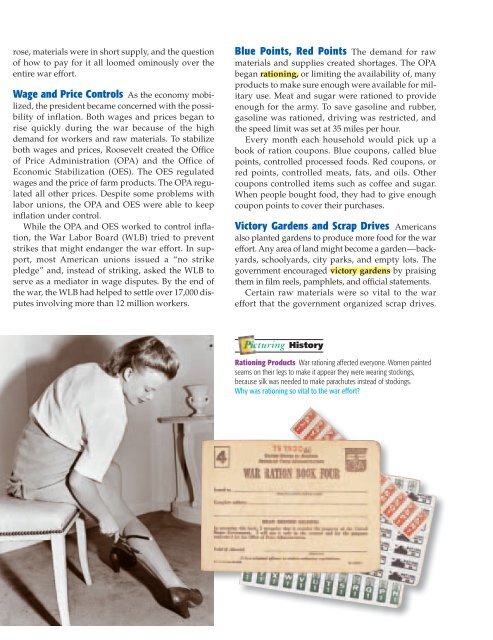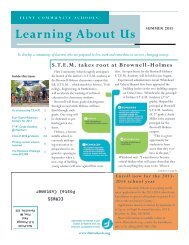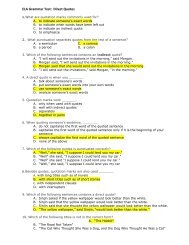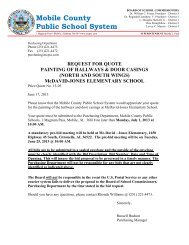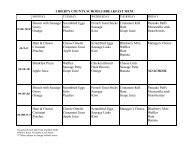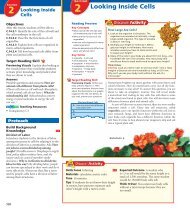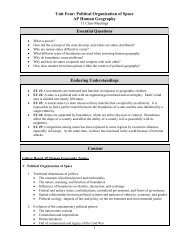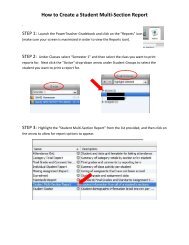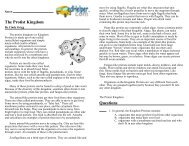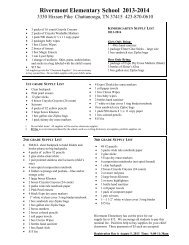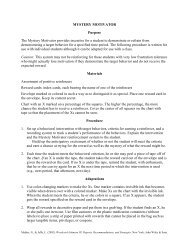Chapter 12: America and World War II, 1941-1945 - Georgia ...
Chapter 12: America and World War II, 1941-1945 - Georgia ...
Chapter 12: America and World War II, 1941-1945 - Georgia ...
Create successful ePaper yourself
Turn your PDF publications into a flip-book with our unique Google optimized e-Paper software.
ose, materials were in short supply, <strong>and</strong> the question<br />
of how to pay for it all loomed ominously over the<br />
entire war effort.<br />
Wage <strong>and</strong> Price Controls As the economy mobilized,<br />
the president became concerned with the possibility<br />
of inflation. Both wages <strong>and</strong> prices began to<br />
rise quickly during the war because of the high<br />
dem<strong>and</strong> for workers <strong>and</strong> raw materials. To stabilize<br />
both wages <strong>and</strong> prices, Roosevelt created the Office<br />
of Price Administration (OPA) <strong>and</strong> the Office of<br />
Economic Stabilization (OES). The OES regulated<br />
wages <strong>and</strong> the price of farm products. The OPA regulated<br />
all other prices. Despite some problems with<br />
labor unions, the OPA <strong>and</strong> OES were able to keep<br />
inflation under control.<br />
While the OPA <strong>and</strong> OES worked to control inflation,<br />
the <strong>War</strong> Labor Board (WLB) tried to prevent<br />
strikes that might endanger the war effort. In support,<br />
most <strong>America</strong>n unions issued a “no strike<br />
pledge” <strong>and</strong>, instead of striking, asked the WLB to<br />
serve as a mediator in wage disputes. By the end of<br />
the war, the WLB had helped to settle over 17,000 disputes<br />
involving more than <strong>12</strong> million workers.<br />
Blue Points, Red Points The dem<strong>and</strong> for raw<br />
materials <strong>and</strong> supplies created shortages. The OPA<br />
began rationing, or limiting the availability of, many<br />
products to make sure enough were available for military<br />
use. Meat <strong>and</strong> sugar were rationed to provide<br />
enough for the army. To save gasoline <strong>and</strong> rubber,<br />
gasoline was rationed, driving was restricted, <strong>and</strong><br />
the speed limit was set at 35 miles per hour.<br />
Every month each household would pick up a<br />
book of ration coupons. Blue coupons, called blue<br />
points, controlled processed foods. Red coupons, or<br />
red points, controlled meats, fats, <strong>and</strong> oils. Other<br />
coupons controlled items such as coffee <strong>and</strong> sugar.<br />
When people bought food, they had to give enough<br />
coupon points to cover their purchases.<br />
Victory Gardens <strong>and</strong> Scrap Drives <strong>America</strong>ns<br />
also planted gardens to produce more food for the war<br />
effort. Any area of l<strong>and</strong> might become a garden—backyards,<br />
schoolyards, city parks, <strong>and</strong> empty lots. The<br />
government encouraged victory gardens by praising<br />
them in film reels, pamphlets, <strong>and</strong> official statements.<br />
Certain raw materials were so vital to the war<br />
effort that the government organized scrap drives.<br />
History<br />
Rationing Products <strong>War</strong> rationing affected everyone. Women painted<br />
seams on their legs to make it appear they were wearing stockings,<br />
because silk was needed to make parachutes instead of stockings.<br />
Why was rationing so vital to the war effort?<br />
592 CHAPTER <strong>12</strong> <strong>America</strong> <strong>and</strong> <strong>World</strong> <strong>War</strong> <strong>II</strong><br />
(l)CORBIS/Bettmann, (r)Stock Montage


